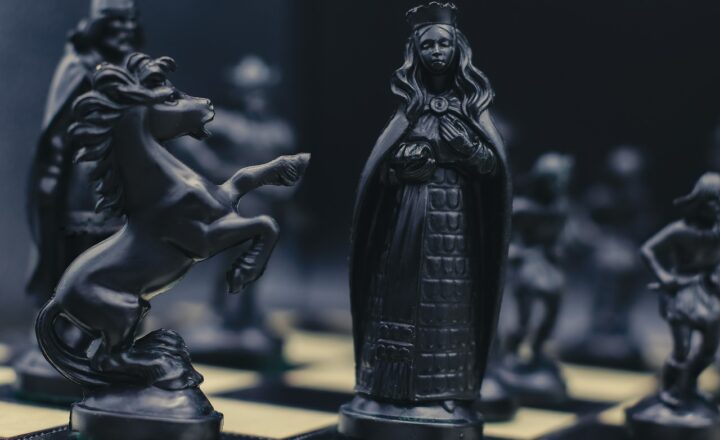The Legends of Vampires, Werewolves, and Ancient Beliefs About Shape-Shifters
November 12, 2024

Throughout history, humanity has been fascinated by the supernatural, with myths and legends passed down through generations. Among these tales, none are more intriguing than those involving vampires, werewolves, and other shape-shifters. These entities, often depicted in folklore and popular culture, hold a mirror to our fears and desires, reflecting the cultural norms and beliefs of the times.
1. The Origins of Vampire Legends
The legend of the vampire has been woven into the fabric of various cultures, with roots traceable back to ancient civilizations. The word ‘vampire’ itself is believed to have originated from the early 18th-century European languages, but the concept predates it by centuries.
In ancient Mesopotamia, tales of blood-drinking demons called “Lamashtu” and “Lilitu” suggested an early understanding of vampiric entities. Meanwhile, in Eastern Europe, the Slavic regions nurtured rich folklore regarding the undead, including tales of the “Strigoi” and the “Upir,” beings that rose from the grave to suck the life from the living.
As Europe entered the Middle Ages, the church played a significant role in shaping vampire mythology. The fear of the undead was closely tied to the church’s perceptions of sin, exorcism, and damnation. During this time, the vampire was often portrayed as a representation of evil, a creature that defied the natural order, consequently leading to horrific public trials and punishments.
2. The Anatomy of the Vampire Myth
What characteristics define a vampire? Most myths agree a vampire possesses certain traits that make it distinct:
- Bloodlust: A ravenous hunger for human blood is a defining characteristic, symbolizing a connection to life and vitality.
- Immortality: Vampires are often depicted as ageless beings, providing a twist on human mortality and the quest for eternal life.
- Weakness to Sunlight: Most legends state that exposure to sunlight will destroy a vampire, representing the victory of purity and good over evil.
- Transformation: Many stories depict vampires as capable of transforming into bats, wolves, or mist, symbolizing their connection to the unknown and the power of transformation.
These common elements have facilitated the evolution of vampire folklore across the globe, adapting to fit different cultural narratives.
3. The Rise of Werewolf Legends
Similar to vampires, the mythology surrounding werewolves is steeped in ancient belief systems, with records found in Greek, Roman, and Norse cultures. The essence of a werewolf embodies the duality of human nature, the struggle between civilization and primal instincts.
The origin of the werewolf can be traced back to the Greek myth of Lycaon, a king transformed into a wolf by Zeus as punishment for his hubris. This myth underscores the notion of transformation as one of punishment or divine retribution.
In medieval Europe, the werewolf emerged in folklore, often described as a man cursed to transform during the full moon. This transformation was viewed as a manifestation of humanity’s chaotic inner nature, leading to various superstitions and witch hunts. Histories from the 16th and 17th centuries document numerous trials against individuals accused of being werewolves, further solidifying the wolf-human connection in cultural lore.
4. Shape-shifters in Global Mythology
The fascination with shape-shifters extends beyond vampires and werewolves to encompass a variety of other mythological creatures around the world. In Native American cultures, skinwalkers are revered in legend as sorcerers capable of transforming into animals. Similarly, the Asian legends of the Kitsune in Japan depict foxes that can change form, often serving as protectors or deceivers.
The Mami Wata spirits in African mythology symbolize water, sexuality, and beauty, often associated with shape-shifting abilities, illustrating the interplay between nature and supernatural beliefs. Such examples indicate that the idea of transforming one’s body is a universal theme that explores the boundaries of identity and existence.
5. Modern Interpretations and Cultural Reflections
In today’s society, vampires and werewolves continue to be popular themes in literature, film, and television, evolving to reflect contemporary values and issues. Famous examples include Bram Stoker’s “Dracula,” which explores themes of sexuality, fear, and power dynamics, and the “Twilight” series, which touches on themes of forbidden love and coming-of-age challenges.
The werewolf narrative has likewise seen reinterpretation, from classic horror films like “The Wolf Man” to more modern series like “Teen Wolf,” which address issues of identity and adolescence, with metaphorical ties to struggles related to acceptance and self-discovery.
This shift from horror to a more nuanced portrayal gives shape-shifting beings a new importance, aligning their narratives with human experiences and societal changes, allowing audiences to relate to these mythical creatures on a personal level.
6. Conclusion: Legacy of the Shape-Shifters
The legends of vampires, werewolves, and shape-shifters are more than mere ghost stories; they reflect the complexities of human nature, our fears, desires, and the quest for understanding the unknown. As societies evolve, so too do these tales, serving as a testament to their enduring legacy.
With each retelling, these stories remind us of humanity’s intrinsic connection to darkness and light, encouraging us to confront our fears and embrace our multifaceted identities. The mythical creatures we have long feared might not just represent chaos, but a deeper reflection of ourselves – a journey of self-exploration in a world filled with mystery.






